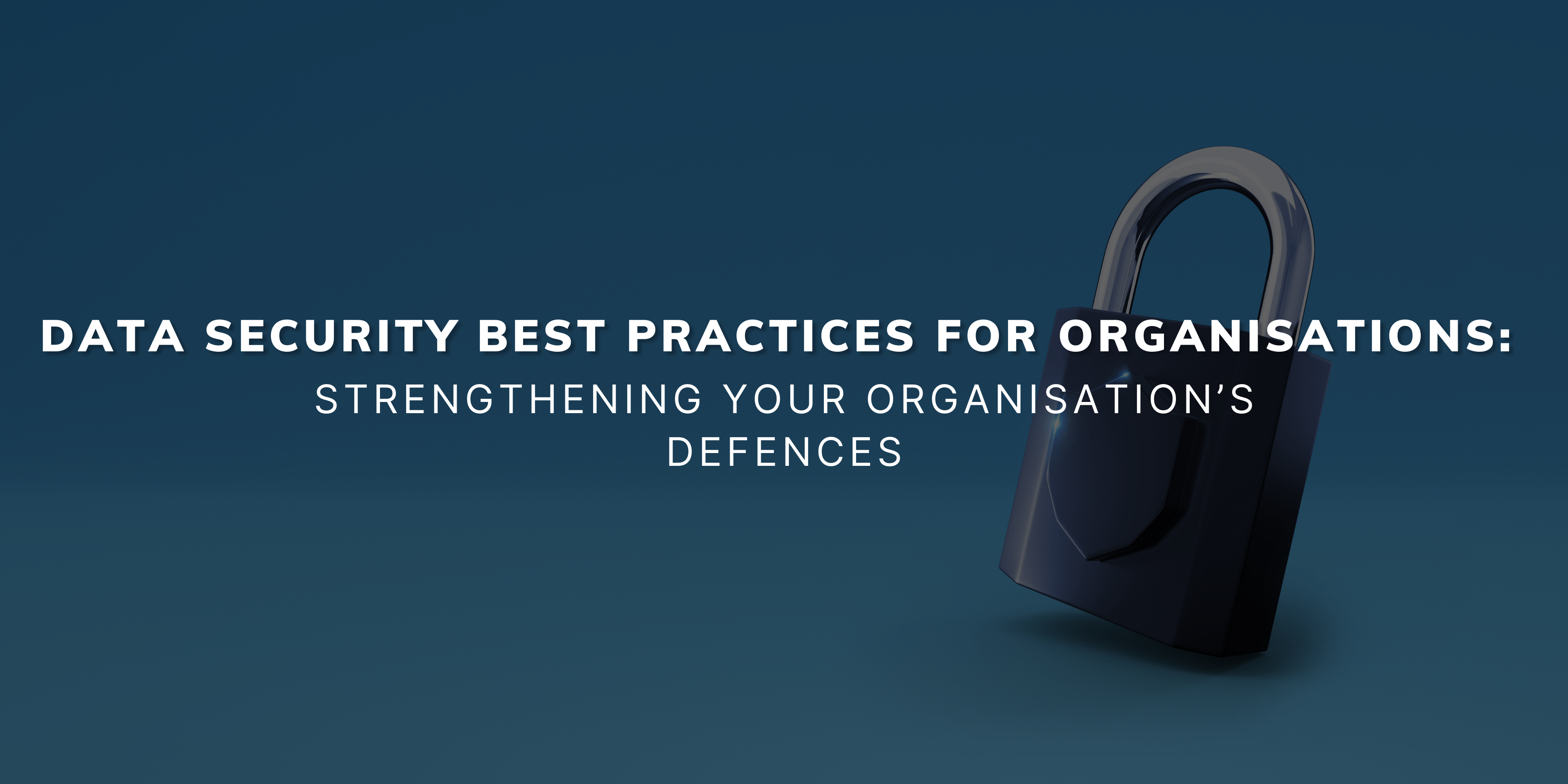
Data Security Best Practices for Organisations: Strengthening Your Organisation’s Defences
In today’s digital era, where data breaches and cyber threats are becoming increasingly sophisticated, the importance of robust data security measures for organisations cannot be overstated. As an organisation, safeguarding sensitive information is not just about protecting your assets; it’s also about maintaining trust with your customers and adhering to regulatory standards. In this blog post, we will explore some of the best practices for data security that organisations should adopt.
Key Summary
- Establish a Strong Data Security Policy
- Implement Access Control Measures
- Regular Training and Awareness Programs
- Use Encryption for Data Protection
- Regularly Update and Patch Systems
- Comprehensive Approach Including Monitoring, Vendor Management, Incident Planning, Compliance, and Data Retention
Establish a Strong Data Security Policy
The foundation of any good data security strategy is a comprehensive and clear data security policy. This policy should outline the protocols for handling and protecting data, and it should be regularly updated to reflect the latest security trends and compliance requirements. Ensure that all employees are aware of and understand these policies.
Implement Access Control Measures
Not all employees need access to all data. Implementing role-based access control (RBAC) ensures that employees can only access the data necessary for their job functions. This minimises the risk of internal data breaches and reduces the potential damage in case an employee’s account is compromised.
Regular Training and Awareness Programs
Human error is often cited as one of the leading causes of data breaches. Regular training programs can significantly reduce this risk by keeping employees aware of the latest security threats, such as phishing attacks, and teaching them how to handle sensitive data properly.
Use Encryption for Data Protection
Encrypting data, both at rest and in transit, adds an additional layer of security. Even if data is intercepted or accessed by unauthorised individuals, encryption ensures that the information remains unreadable and secure.
Regularly Update and Patch Systems
Cyber threats are constantly evolving, and outdated systems are a prime target for attackers. Regularly updating and patching operating systems, applications, and security software is essential for protecting against known vulnerabilities.
Monitor and Audit Data Usage
Continuous monitoring of systems and auditing data usage can help in quickly identifying and responding to unusual activities that could indicate a security breach. Automated tools can be used for real-time monitoring and alerting.
Vendor Risk Management
Organisations should not overlook the security protocols of their vendors and third-party service providers. Ensure that your vendors adhere to the same data security standards as your organisation to prevent breaches through third-party systems.
Plan for Incident Response
Despite the best security measures, breaches can still occur. Having an incident response plan in place ensures that your organisation can respond quickly and effectively to minimise the damage.
Comply with Legal and Regulatory Requirements
Compliance with data protection laws and regulations is not just a legal requirement but also a way to ensure that your organisation follows best practices in data security. Regular compliance audits are essential.
Data Retention Policy and Strategy
An effective Data Retention Policy for an organisation involves categorising data types (data cataloguing), complying with legal standards, setting secure storage and access controls, and defining specific retention and deletion periods. Regular updates, employee training, and strict enforcement are essential to ensure compliance and protect against data mismanagement risks.
Conclusion
Data security is an ongoing process that requires constant vigilance and adaptation to new threats. By implementing these best practices, organisations can significantly enhance their data security posture and protect their most valuable assets in an increasingly digital world.
